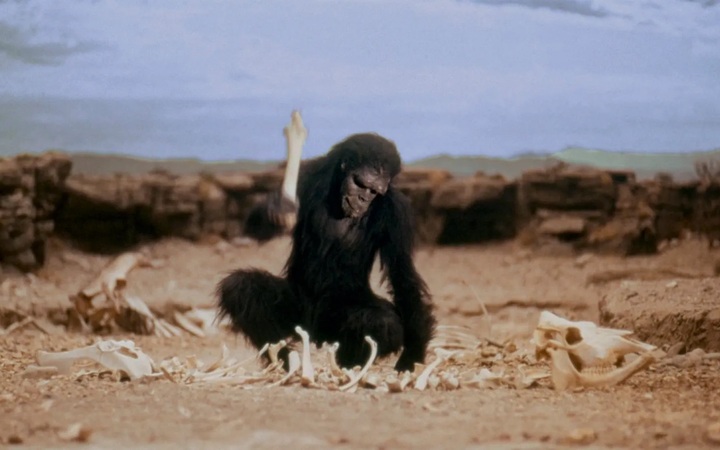To start, here’s a bunch of analogies, some good, some not so good:
1.
People in the West often think of ramen as a defining Japanese food, but that’s not how the Japanese see it. Ramen only arrived in Japan in 1910 when a shop in Tokyo opened with 12 Cantonese cooks. It’s still common to refer to ramen as chūka soba (“Chinese soba”). Rather than trying to classify it as “Japanese food” or “Chinese food”, a better way to think about ramen is like Chicago-style pizza. It’s adapted to local tastes but derived from an import that’s still central in people’s minds.
2.
In the early 1970s, a group of 150 young couples in Washington DC formed a baby-sitting cooperative. Everyone got some coupons they could trade for one hour of babysitting time, after which whoever got the coupons could re-use them. At first, this didn’t work. Couples wanted to keep a reserve of coupons and so were hesitant to use theirs before they earned some from others. But others were thinking the same thing, so no one traded anything. They eventually solved the problem by issuing more coupons until people started using them and everyone lived happily ever after.
This is analogous to how recessions happen in the real economy: If everyone gets scared about their future, they’ll slow down spending until they have a cushion of savings. But since everyone else is thinking the same thing, it’s hard to earn money, and economic activity slows even though everyone would like to both earn more and spend more. If the money supply is expanded, the economy can pick up.
3.
“He was as tall as a 6’3” tree.”
(Does anyone know who to attribute this to?)
4.
Evolution tuned single-celled organisms to KILL CONSUME MULTIPLY CONQUER and then those cells assembled into multicellular life for mutual benefit but single cells still have the same incentives so they sometimes defect—cancer.
This is analogous to how evolution tuned animals to KILL CONSUME MULTIPLY CONQUER and then those animals assembled into packs/herds/villages for mutual benefit but individual animals still have the same incentives so they sometimes defect—steal food, kill other people in the village, etc.
5.
“Well, it’s important to remember the average Indian generates only about one tenth as much carbon pollution as the average American does. And what’s more, India’s cumulative emissions since 1990 are only about a quarter of the United States. So in some ways, India is in the position of the guest who’s shown up late to the dinner party just as the plates are being taken away and is now being asked to help clean the pots and pans.”
6.
Hydraulic systems are analogous to electric circuits, with the following mappings:
- charge ↔ volume of water
- current ↔ flow of water
- voltage ↔ pressure of water
You can built analogous systems by substituting things like:
- batteries ↔ pumps
- wires ↔ pipes
- resistors ↔ bottlenecks
- ground ↔ large reservoirs
For a hydraulic system, power is flow × pressure while for an electrical circuit, power is current × voltage. If you use SI units, both of these convert to watts.
(If you wonder what an electrical diode corresponds to in a hydraulic system, I refer you to US patent 1329559.)
7.
When Napoleon captured Moscow in 1812, it had been burned nearly to the ground. A dead city would not sustain the French over winter and they eventually left Russia in defeat. If you were going to resist the French by burning down your own cities, you’d want to make damn sure they were close before starting the fires.
This is analogous to why memory T-cells exist: The immune system fights viruses by telling cells near the infection to self-destruct, thus denying the virus the chance to replicate. But doing this unnecessarily is how you get auto-immune disorders, so the immune system is hesitant to initiate the process. However, once there’s been an infection, the body creates memory T-cells that remember unique protein fragments from the virus and ramp up immediately when they see them.
8.
“Worrying about the rise of [artificial general intelligence] is like worrying about overpopulation and pollution on Mars.”
9.
Days of Being Wild is a 1990 film by genius director Wong Kar-wai. (If you haven’t seen it and there’s any chance you ever would, please skip this example!)
So this film is set in Hong Kong in 1960 and centers on Yuddy, a charismatic playboy who has a series of relationships with women who fall in love with him, after which he casually and somewhat cruelly discards them. He is disrespectful to his adopted mother and obsessed with his biological mother, who he’s never met.
He justifies his behavior as follows:
“I’ve heard that there’s a kind of bird without legs that can only fly and fly, and sleep in the wind when it is tired. The bird only lands once in its life… that’s when it dies.”
The case against analogies
Why are analogies sometimes so frustrating? Here’s a common pattern:
Abe: We should do X to Y so that Z will happen.
Beth: No, that’s stupid. That’s like doing A to B.
(Everyone agrees doing A to B is stupid.)
Abe: What? That’s not the same, X is not like A because of [reasons].
Beth: Sure it is, just think of how X and A share [characteristic].
Abe: But the crux of the relationship of X and Y is [something] whereas for A and B it is [something else].
Beth: Oh, bless your heart no, the relationship of X to Y and A to B is [3rd thing].
Abe: Look, but even if that were true, you’re only looking at [outcome]. But my goal Z is [different outcome], where A and B aren’t relevant.
Beth: No, you see, the meta-goal is [3rd outcome].
Abe: Wow, I really should have researched A and B more before starting this conversation.
What went wrong here? What they should have been talking about is:
- Does doing X to Y really cause Z?
- Is Z good?
- Are there downsides of doing X to Y?
- Are those outweighed by Z?
Instead, Abe is stuck arguing meta-bullshit about A and B, which he doesn’t care about or maybe even understand. By insisting on the analogy, Beth has forced Abe to fight the battle on unfriendly terrain, where a victory doesn’t even win the territory he was trying to take in the first place.
The case for analogies
Do you see what I did there? If you’re rolling your eyes at my little gambit of using an analogy to explain why analogies are bad, fair, but notice something: Did you actually think about battles or battlefields? Maybe not, because “fight the battle” is such a well-worn analogy that it calls to mind an abstract conflict as much as groups of people settling a dispute with violence.
I think that the reason analogies are so pervasive is that they save effort. Inside your brain, you’ve built little machines that help you understand different things in the world. Often these little machines have a lot of internal structure and took a lot of work to build. A good analogy tells you how to take a machine you’ve already got and plug it into a new context and understand a new situation. It’s fundamentally a good idea.
Now, you might think that you could clean this process up. Maybe you could take your existing machines and distill them into their essential features so that you can talk about them without referring to the original contexts at all. But then you’ll see analogies between those abstractions and try to extract their features and suddenly you’ll wake up and find that you’ve invented category theory after which you won’t be able to communicate with normal people at all except to tell them how important it is that they learn category theory. Not recommended.
So how to distinguish a good analogy from a bad one? You might think that it’s accuracy, but it’s pretty easy to see that can’t be right. The guy who was as tall as a 6’3” tree really was (I assume) exactly that tall. But it’s still a useless analogy. Meanwhile, the hydraulic analogy for electrical current is flawed since electrons can push and pull distant electrons via electrical and magnetic fields, while water molecules only affect their neighbors. That’s a real flaw, but the analogy is still marvelous.
I think that what makes an analogy good is not accuracy, but rather having nontrivial structure that’s shared between both sides of the analogy. If that’s true, and it helps people understand one side more easily, then the analogy is useful, even if it’s imperfect.
Analogy rules
With those thoughts in mind, here are some proposed rules for how to use analogies:
- Analogies are good. Rejecting them outright denies human nature.
- If an analogy can be easily re-stated as a direct argument without losing something essential, it’s probably a bad analogy.
- In a good analogy, both sides should have significant shared structure. The more that’s shared, and the deeper the structure, the better.
- Imperfections in analogies are OK. Since good analogies have deep shared structure, that creates more opportunities for imperfections. We should expect and tolerate those imperfections, but also be open about what they are.
- Analogies should be made in the service of the receiver of the analogy. The goal is to save some of the effort of constructing a new mental model by giving a good starting point. If the recipient of the analogy has made a fair effort to understand it and you’re still stuck on meta-analogy bullshit, drop it.
Take the analogy between worrying about artificial general intelligence (AGI) and worrying about traffic on Mars. This could be restated as “Worrying about the rise of AGI is silly because AGI isn’t going to happen for a long time, and any effort put into solving it is wasted.”
Is that correct? Maybe, I don’t know! But what does the analogy add over a direct argument? What do AGI and traffic on Mars share beyond being science-y stuff from the future? Not much, and there’s an important difference in that traffic is a familiar annoyance while AGI is claimed to be an existential threat. If you think it’s not an existential threat, great, but better to explain why than sneak in an assumption that you’re right as part of the setup of an analogy.
Or, take the analogy between India being asked to control carbon emissions and a late dinner guest being asked to wash dishes. There’s lots of shared structure: Parties are fun, and carbon emissions are also fun. Washing dishes and reducing carbon emissions both need to be done later. And India started emitting carbon later, just like a late dinner guest.
But there are also some important differences. When the United States was emitting carbon decades ago, it was operating at the technological frontier. Those emissions improved the economy and lives of Americans, yes, but they also helped expand the technological frontier, making it easier for India to develop via catch-up growth later. In particular, those emissions helped develop energy technologies so that it’s now much easier to grow an economy while emitting less carbon.
To fix the analogy, you’d need some bizarre scenario where during the party America had lots of fun and created lots of dirty dishes but also, like, discovered new partying methodology and new ways to use dishes so they are easier to wash? Maybe that “fixes” the analogy, but it’s now a monstrosity that doesn’t give insight into anything. Better to use a direct argument like, “The United States has much larger cumulative historical emissions and much larger current per-capita emissions than India. It’s unfair to expect India to maintain lower per-capita emissions than the United States indefinitely.”
So in Days of Being Wild (again, please watch it!) Yuddy’s first conquest is Li-zhen, who becomes depressed after Yuddy leaves her. She eventually connects with Tide, a kind policeman who finds her in desperation and loans her cab fare. He seems to be in love with her, and they seem close to starting a relationship, but Tide is too principled to push things, and then his mother dies and he leaves Hong Kong to become a sailor.
Eventually, Yuddy goes to the Philippines to try to find his birth mother, who refuses to see him. He collapses in the street drunk and despondent, until Tide—waiting to board a ship—wanders past and helps him. The next day, Yuddy stabs someone forging a passport for him, creating a brawl which is resolved by Tide grabbing a gun and shooting someone. After they flee by train, Yuddy seems to feel the need to explain himself:
Yuddy : Hey, have you heard of a kind of bird…
Tide : [interrupting] Yes! The bird with no legs! Maybe you can fool girls with that story. Are you like a bird? In what way? You’re just the drunk I picked out of the garbage in Chinatown!
Tide: [continues] Do you think you are like a bird? If you could fly, you wouldn’t have to be here. Go and fly, if you have such an ability!








